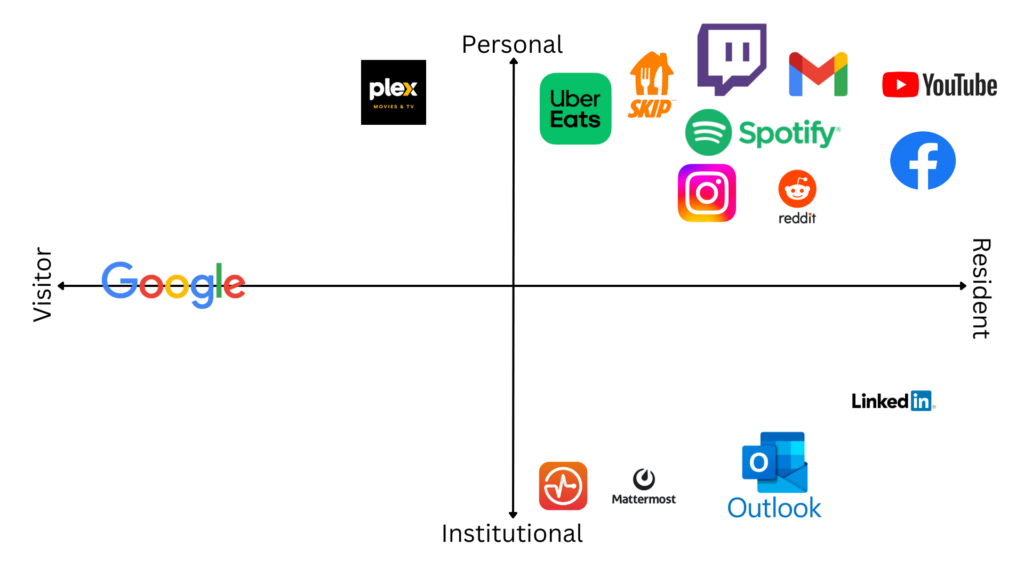What is a digital identity?
According to Eric Stroller, a social media expert, digital identity is one’s presence online, their digital footprint. The concept of digital identity encompasses how individuals post, interact and use digital tools. The majority of people today, especially those who use social media, have some kind of digital identity. With social media, you leave a digital footprint which can be searched and gradually build up your social identity as you post more frequently or interact with online communities.
How do personal versus professional approaches to digital identity affect social media use?
Personal versus professional approaches to digital identity and how it affects social media use differ greatly but also have points where they converge. For instance, if someone were to have a personal social media account where they have only friends and family added, they would most likely feel more comfortable with sharing many aspects of their life that they would not share on their professional account. While if they were on their professional account, they would like to develop a good professional image of themselves for when an employer or coworker was to look them up and connect with them. The issue lies when an employer or coworker was to search them up and view their personal social media account which they did not intend to share. This can lead may lead to the employer or coworker having a potentially negative impression of the individual based on their personal account. In my opinion, it is important to maintain a positive image on both personal and professional social media accounts.
How do digital identities converge in networked publics – what are the impacts and benefits?
Digital identities converge in networked publics with social media. Social media is a great way to build your digital identity and enables fast and easy communication channels with your friends, family, and coworkers. An impact of this would be that since your information is out on the world wide web, you may have posts that you would not want employers to see. Even if you try to delete a post as you deemed it to be inappropriate or immature but made in your adolescence, that post may be deleted on the website but could be still floating around on the web without you knowing. It is hard to bury your digital footprint which can potentially lead to negative impacts when networking. On the other hand, having a social media presence can allow potential employers to see your portfolio, what hobbies you may have, and generally what type of person you are. This could open up employment and networking opportunities as people want to connect with someone that they would enjoy working with.
Can a digital wallet provide trust in networked publics?
The prevalence of digital wallets has increased over the years, with many people using digital wallets like Apple Pay and Google Pay. I think that a digital wallet does provide trust in networked publics, with many banks providing compatibility with digital wallets. Personally, for the past 3 years, I have mainly only used Apple pay for all my day-to-day transactions. Just by double tapping the power button, I can access my credit and debit cards that are linked to my digital wallet and use Face ID as a security method. Since mobile phones are practically always with us, it allows for a more convenient way to pay for items and also from my experience, tap-to-pay technology on my phone works better than my cards and provides haptic feedback for when a transaction goes through.
References
Stroller, Eric. “Eric Stoller – What is Digital Identity?.” Youtube, uploaded by
University of Derby, 25 November 2016, https://www.youtube.com/watch?v=u0RryRbJza0&ab_channel=UniversityofDerby; (0:00-0:21)

Recent Comments